Do sunglasses block blue light? This is a common question as more people spend hours in front of digital screens and under bright sunlight. While traditional sunglasses are designed to shield eyes from ultraviolet (UV) rays and glare, not all of them effectively filter blue light. The answer depends on lens material, coating, tint, and intended use. As awareness grows about digital eye strain and the effects of high-energy visible (HEV) light, consumers want to know whether their sunglasses offer full-spectrum protection.
Moreover, blue light comes from both natural and artificial sources. Sunlight is the largest emitter, but devices like smartphones, computers, and LED lights also produce significant amounts. During the day, blue light can boost alertness and mood. However, excessive exposure—especially at night—may disrupt sleep and contribute to eye fatigue. Therefore, understanding how sunglasses interact with blue light is essential for maintaining long-term eye health.
Also, many assume that dark lenses automatically mean better protection. In reality, lens darkness does not equal blue light blocking ability. A clear lens with a special coating can filter more blue light than a heavily tinted one without it. As a result, choosing the right pair requires knowledge beyond aesthetics.
Furthermore, some brands now market “blue light blocking sunglasses” specifically for outdoor use. These combine UV filters with HEV-reducing technology to provide comprehensive defense. Others confuse the issue by selling indoor blue light glasses that lack UV protection—making them unsuitable for sunlight.
This article explores the science behind blue light, evaluates different sunglass technologies, and answers whether do sunglasses block blue light based on design and function. By the end, readers will be equipped to make informed choices for daily eye care.
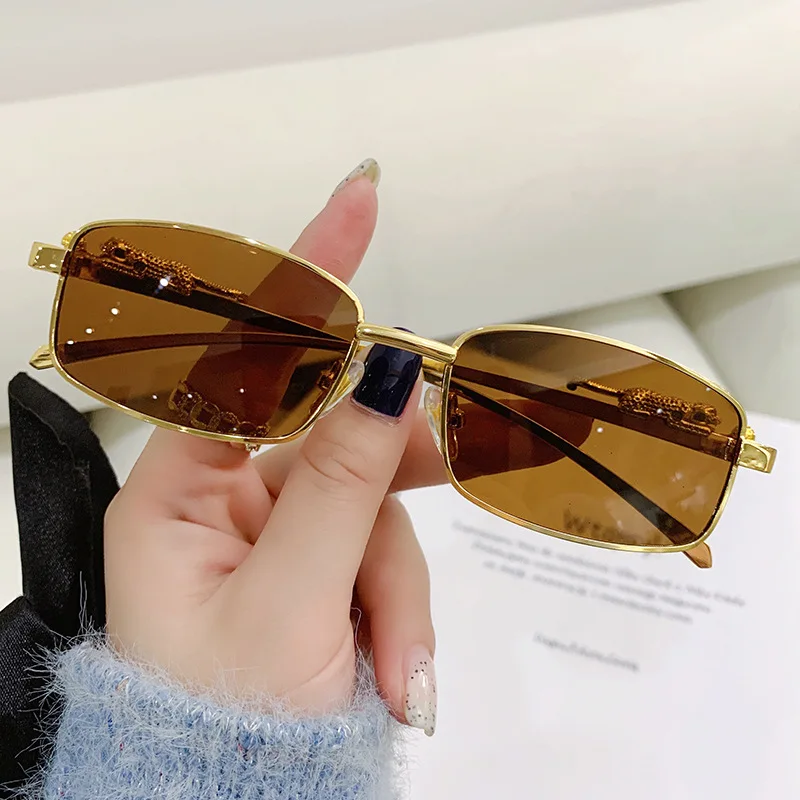 What Is Blue Light and Where Does It Come From?
What Is Blue Light and Where Does It Come From?
To understand if do sunglasses block blue light, we must first define what blue light actually is. Blue light falls within the visible light spectrum, ranging from about 380 to 500 nanometers (nm). It has one of the shortest wavelengths and highest energy levels among visible lights—hence its classification as high-energy visible (HEV) light.
First, natural sources dominate blue light exposure. The sun emits a broad spectrum, including intense blue light. In fact, daylight appears white because it contains all colors, with blue being especially prominent. Outdoors, HEV light helps regulate circadian rhythms, improve focus, and elevate mood during daytime hours.
Second, artificial sources have increased dramatically in recent years. Digital screens such as phones, tablets, laptops, and televisions emit concentrated blue light. LED lighting, commonly used in homes and offices, also produces a strong blue peak. Prolonged screen time leads to cumulative exposure, which may cause digital eye strain.
Third, biological effects vary by timing and intensity. Morning blue light supports wakefulness and mental clarity. But evening exposure—especially after sunset—suppresses melatonin production. This disruption can delay sleep onset and reduce sleep quality over time.
Fourth, eye health concerns are growing. Some studies suggest chronic HEV exposure may contribute to retinal damage and age-related macular degeneration (AMD). Although research is ongoing, many experts recommend limiting unnecessary blue light, particularly before bedtime.
Fifth, children’s eyes absorb more blue light than adults’. Their lenses are clearer, allowing deeper penetration into the retina. As kids spend more time on devices, protective measures become even more important.
Because blue light plays both beneficial and potentially harmful roles, managing exposure wisely is key. The next step is determining how well sunglasses handle this task.
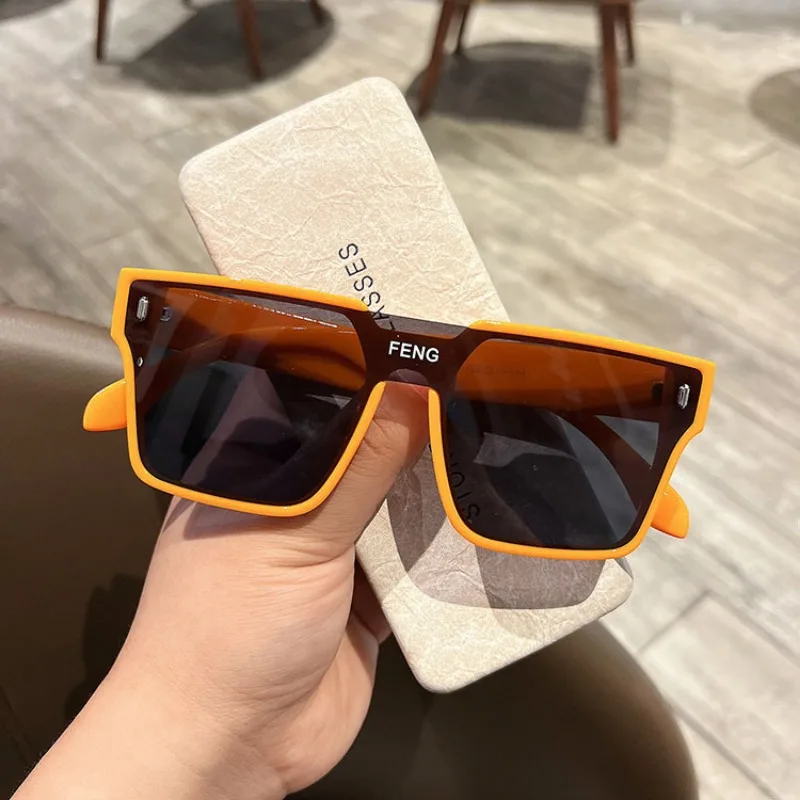 How Sunglasses Are Designed to Protect the Eyes
How Sunglasses Are Designed to Protect the Eyes
Sunglasses serve multiple purposes: reducing brightness, minimizing glare, blocking UV radiation, and enhancing visual comfort. However, their ability to filter blue light varies widely depending on design choices.
First, UV protection is the most critical feature. Quality sunglasses block 99–100% of UVA and UVB rays. This prevents cataracts, photokeratitis, and other sun-related eye conditions. Always check for labels like “UV400” or “100% UV protection.”
Second, lens tint affects visibility and comfort. Gray tints preserve natural color perception and suit bright, sunny days. Brown or amber tints enhance contrast, making them ideal for sports or driving. Green lenses balance clarity and color accuracy.
Third, polarized lenses reduce glare from reflective surfaces like water, snow, or roads. They improve visual sharpness and reduce squinting. However, polarization does not inherently block blue light—it only manages reflected light.
Fourth, lens materials influence performance. Polycarbonate lenses are lightweight and impact-resistant. They often come with built-in UV filters. Glass lenses offer superior clarity but are heavier and more fragile.
Fifth, coatings and treatments add functionality. Anti-reflective coatings reduce back-glare. Mirror coatings reflect excess light. Most importantly, blue light filtering coatings can be applied to selectively absorb or reflect HEV wavelengths.
Sixth, fit and coverage matter. Wraparound styles prevent peripheral light entry. Larger frames shield more of the eye area, reducing overall exposure.
Seventh, photochromic lenses darken in sunlight and lighten indoors. Some versions include blue light filtering, but not all. Check product details carefully.
Therefore, while most sunglasses protect against UV rays, only specific models address blue light. Consumers must look beyond appearance to find true HEV defense.
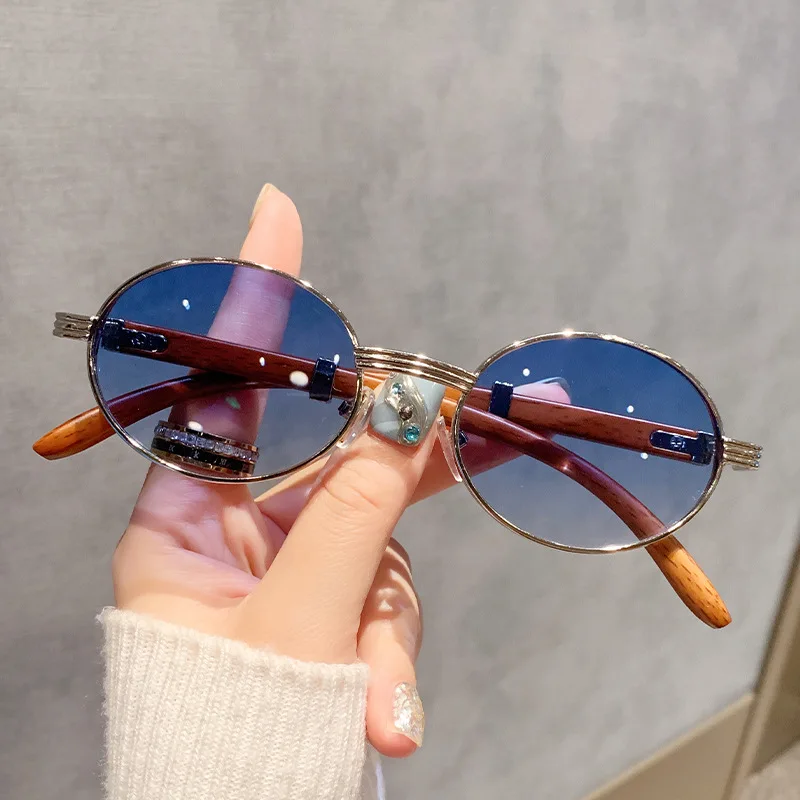 Do Regular Sunglasses Block Blue Light Effectively?
Do Regular Sunglasses Block Blue Light Effectively?
The short answer is: not always. Many standard sunglasses reduce overall brightness but allow a significant amount of blue light to pass through. So, when asking “do sunglasses block blue light,” the response hinges on lens specifications.
First, dark lenses without special coatings mainly reduce visible light intensity. They make environments feel more comfortable but don’t target specific wavelengths like blue light. For example, a black-tinted lens might block 80% of total light but still transmit 60% of blue light.
Second, amber, copper, or rose-colored lenses naturally absorb more blue light due to their tint properties. These hues filter out shorter wavelengths while enhancing contrast. Athletes and drivers often prefer them for improved depth perception.
Third, yellow lenses are excellent at blocking blue light. Used in low-light conditions, they increase visual acuity by removing scattered blue haze. However, they distort color perception and are not ideal for daytime sun.
Fourth, blue light-specific lenses contain dyes or multi-layer coatings that target the 400–450 nm range. These are sometimes labeled as “HEV protection” or “blue light filtering.” They maintain clarity while reducing high-energy exposure.
Fifth, indoor vs. outdoor confusion misleads many buyers. Computer glasses with yellow or clear lenses block blue light from screens but lack UV filters. They should never replace sunglasses outdoors.
Sixth, marketing claims can be misleading. Terms like “blocks blue light” may refer only to artificial sources, not sunlight. Always verify whether the product covers both UV and HEV spectrums.
Seventh, transmittance charts from manufacturers show exact filtration levels. Look for data indicating reduced transmission between 400–500 nm.
In summary, regular sunglasses may offer partial blue light reduction. But only specially designed models provide meaningful protection against HEV rays from the sun.
Specialized Sunglasses That Do Block Blue Light
As demand rises, several types of sunglasses now explicitly target blue light filtration. These go beyond basic UV protection to offer advanced visual defense.
- Amber-tinted performance sunglasses are popular among pilots, athletes, and outdoor workers. Brands like Oakley and Ray-Ban offer styles with lenses that absorb up to 80% of blue light. They enhance contrast and reduce glare simultaneously.
- Copper or rose lenses provide balanced blue light filtering with minimal color distortion. Ideal for driving, they improve object definition against hazy skies.
- Dual-coated polycarbonate lenses combine UV blockers with anti-blue-light layers. Some use nanotechnology to reflect HEV rays without altering lens appearance.
- Polarized + blue light combo lenses merge two benefits. They cut glare from surfaces and suppress scattered blue light. Perfect for beachgoers, boaters, and skiers.
- Photochromic blue light blockers adapt to changing light. Indoors, they filter screen emissions. Outdoors, they darken and increase HEV protection.
- Wraparound safety sunglasses used in industrial settings often include blue light reduction. ANSI-rated models protect against both physical hazards and intense light exposure.
- Prescription sunglasses with blue filters allow customized vision correction and HEV defense. Opticians can apply special coatings to fit individual needs.
These specialized options prove that yes, do sunglasses block blue light—if designed to do so. Consumers should prioritize verified features over generic claims.
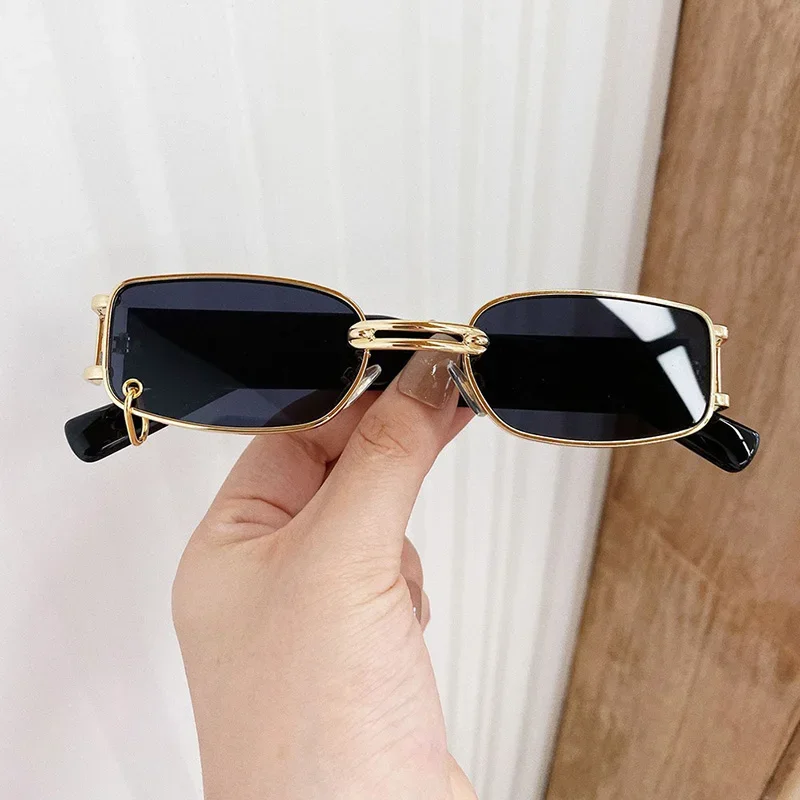 Caring for Your Sunglasses to Maintain Blue Light Protection
Caring for Your Sunglasses to Maintain Blue Light Protection
Even the best sunglasses lose effectiveness if poorly maintained. Scratches, dirt buildup, and worn coatings reduce optical performance—including blue light filtration.
First, clean lenses regularly. Use a microfiber cloth and lens-safe solution. Avoid paper towels or clothing, which can scratch surfaces and degrade anti-reflective or blue light coatings.
Second, rinse before wiping. Dust particles act like sandpaper. Rinsing removes debris and prevents abrasion during cleaning.
Third, store properly. Keep sunglasses in a hard case when not in use. Leaving them in hot cars or loose bags damages frames and lenses.
Fourth, avoid heat exposure. High temperatures can warp frames and peel off lens coatings. Never leave sunglasses on dashboards or near radiators.
Fifth, replace scratched lenses. Deep scratches scatter light and diminish clarity. If the blue light coating is compromised, consider upgrading.
Sixth, check for peeling or cloudiness. Over time, multi-layer treatments may degrade. Signs include rainbow effects or uneven tint.
Seventh, handle with both hands. Removing glasses with one hand stresses hinges and causes misalignment.
Proper care ensures that your sunglasses continue to deliver full protection—including blue light blocking—for years.
Frequently Asked Questions About Blue Light and Sunglasses
Many people wonder how sunglasses affect blue light exposure. Here are answers to common questions.
Do all sunglasses block blue light?
No. Only those with specific tints or coatings do. Standard dark lenses may not reduce HEV light significantly.
Can I wear blue light glasses outside?
Only if they include UV protection. Most indoor blue light glasses lack UV filters and are unsafe in sunlight.
What color lens blocks the most blue light?
Yellow and amber lenses filter the highest percentage. However, they alter color perception and suit low-light use best.
Are polarized sunglasses enough?
They reduce glare but not necessarily blue light. Look for added HEV filtering if needed.
Do children need blue light blocking sunglasses?
Yes. Kids’ eyes are more sensitive. Choose UV400 protection with wraparound designs for maximum safety.
Can blue light from the sun harm my eyes?
Long-term exposure may contribute to retinal stress. While research continues, protection is a smart precaution.
Do expensive sunglasses block more blue light?
Not always. Price reflects brand and style. Always check technical specs instead of assuming quality.
These answers help clarify misconceptions and guide smarter purchases.
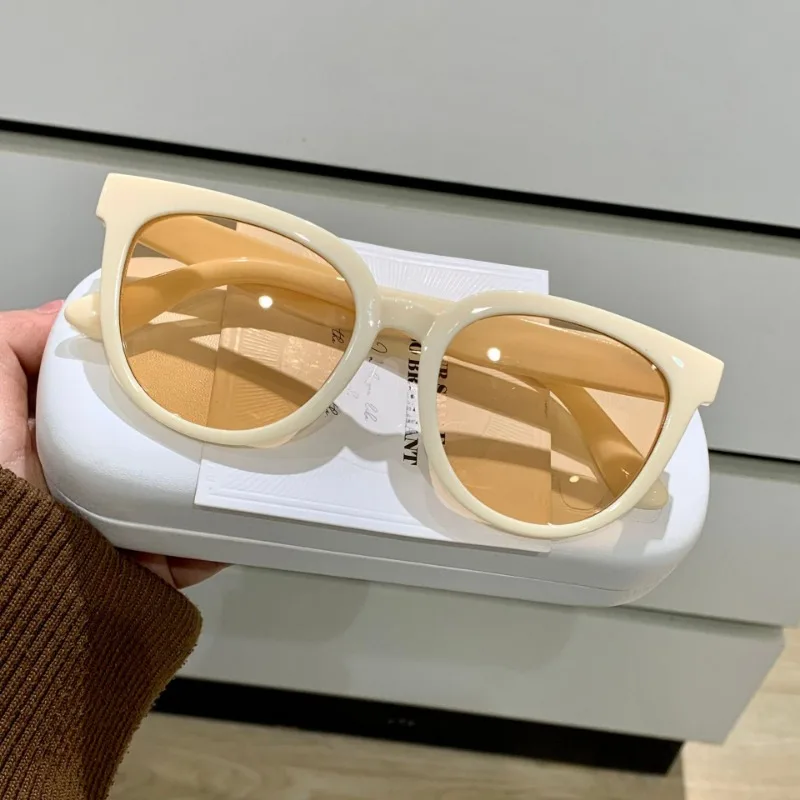 Final Thoughts: Yes, Do Sunglasses Block Blue Light—But Only the Right Ones
Final Thoughts: Yes, Do Sunglasses Block Blue Light—But Only the Right Ones
Do sunglasses block blue light? The answer is yes—but only certain models do so effectively. Standard sunglasses protect against UV rays and glare, yet many fail to filter high-energy visible light. To truly reduce blue light exposure, consumers need lenses with specific tints, coatings, or materials designed for HEV filtration.
From amber-tinted performance gear to photochromic dual-protection models, effective options exist. The key is reading labels, understanding lens technology, and avoiding assumptions based on darkness alone.
As screen time and sun exposure continue to rise, protecting our eyes becomes more important than ever. Choosing the right sunglasses means safeguarding both short-term comfort and long-term vision health.
Ultimately, the question “do sunglasses block blue light” leads to a broader truth: not all sunglasses are created equal. With informed choices, wearers can enjoy complete protection—under the sun and beyond.

